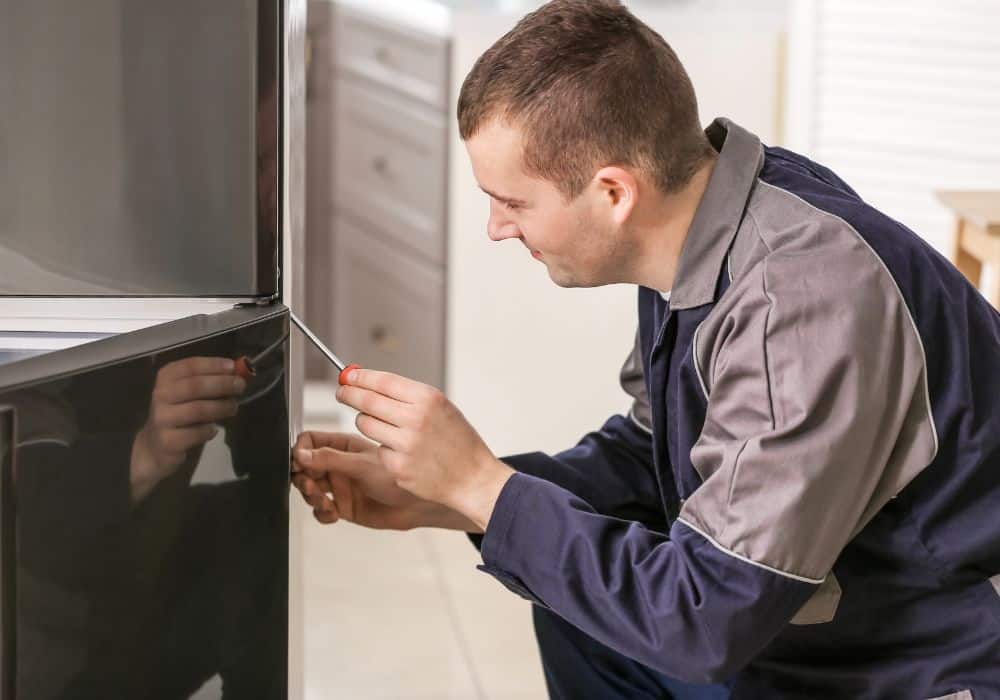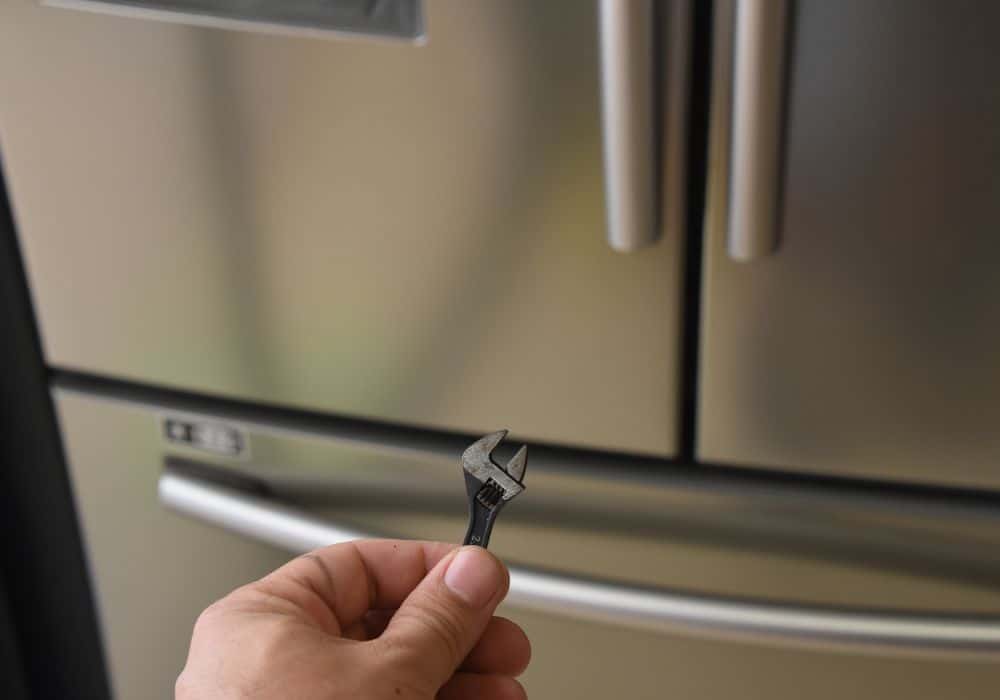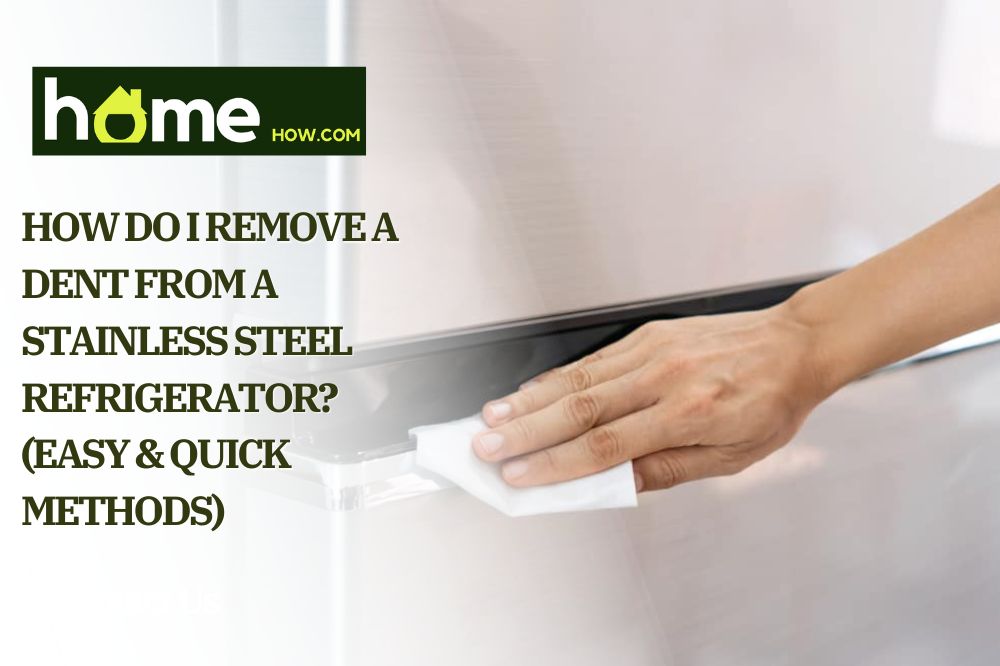Because of its renowned strength, it might initially seem impossible to smooth out or remove a dent from stainless steel. And, of course, there’s the worry that whatever you do tr, you might only worsen the problem!
Especially on large surfaces like refrigerator doors, a slight knock or bump can spoil the overall appearance of your pristine stainless steel and can get worse over time.
So what can be done? Instead of ordering a replacement panel or door or reaching for the phone to call a repairer, what if we told you there was a way to remove that pesky dent yourself?
This article will explain a variety of methods that you can use to smooth the surface and restore it to its former glory.
Six easy methods to removing a dent from stainless steel refrigerators
Below are six of the most common and effective ways to smooth out your stainless steel fridge:
1. Apply hot hair with a hair dryer
The most popular and effective method is to use a standard hair dryer. Blowing hot air directly onto the dent will cause the surrounding metal to expand. You should aim for bursts of about 30 seconds or so, which is more than enough time to allow the metal to expand.
Allow your refrigerator to cool naturally, and examine the mark closely to see if it has improved. You can repeat this process several times to gradually return the stainless steel to its original state.
Be careful not to apply too much direct heat to the appliance, though, as this may strip away any paint or protective coating.
2. Blow cold, condensed air
If the hot air did not buffer your dent, you can flip the script and try cold, condensed air. While hot air will cause the stainless steel to expand, cold air will contract it. This can help improve the appearance of the dent or even remove it entirely once the surface returns to average temperature and its original state.
First, heat the dented area. Then, hold the can of air duster upside down, ensuring it blows out chilled carbon dioxide. The chilled carbon dioxide quickly freezes the metal; this rapid temperature change can pop the dent out.
Remember, though, that condensed air can cause severe burns to your skin. Be incredibly careful when aiming the can, and store it away when unused.

3. Dry ice
Our next method is much safer and equally effective to condensed air – simple dry ice. The coldness of the ice will contract the metal, helping it regain its original, un-dented shape. Don a pair of gloves, and hold a piece of dry ice against the dent for one full minute so the metal freezes.
The only thing you must remember when holding dry ice toward the dent is to be careful not to scratch the surface further. Cover the thin sheet of ice in a soft cloth to remove its sharpness, and avoid rubbing it against the metal where possible.
4. Suction
Effective for even the most severe or troubling dents, suction tools can help pull back the metal, restoring it to its original shape and flatness.
There are various tools you can consider. Place a regular suction cup dent-puller or a simple toilet plunger directly over the dent. Rub water around the surface with a damp cloth to ensure a positive seal. Then press your tool directly into the mark. Then, pull the suction cup or plunger out; hopefully, your refrigerator will return to its normal shape.

5. Dent remover
The truth is in the name – a dent remover is a special tool used to smooth out metal surfaces quickly and easily, using a hot glue gun and a small suction cup. It works like a plunger but with more force and adhesion.
You can find dent removers in various sizes in most hardware and auto repair shops. Most removers recommend cleaning the dent beforehand, as dirt, dust, grime, or debris can compromise the adhesive.
6. Physically push the dent back
Sometimes, the simplest method can be the most effective. Depending on the size of the dent and its location, e.g., the refrigerator door, you may be able to push it back into place.
Place pressure on the opposite side of the dented area, and keep a watchful eye on the dent in question. Be patient, and gradually increase pressure to see if any metal is moving. Be careful not to over-exert yourself, or you may end up causing a new dent to form!

Conclusion
The very sight of a dent on your stainless steel appliances can be simply horrifying. Their pristine surface has been marked, ruined, and you’re undoubtedly worried the problem could spread and get worse.
But rather than admitting defeat and ordering a replacement, removing a dent from stainless steel is pretty straightforward. And much of the equipment you use will already be in your home, anyway.
As our article has shown, there will be lots of trial and error when finding a solution to your dent. It will depend on the best method’s size, shape, and location.
Please comment below if you still have questions about removing dents from stainless steel or have some expert tips to share with everyone else.
If in doubt, remember:
- Hot temperatures, like from a hair dryer, can expand the metal and help restore its original, flat shape.
- Cold temperatures, like that from condensed air or dry piece, can contract the stainless steel back into place.
- Before any method, use a moist cloth to remove any existing grime around the dented area of your refrigerator beforehand. Any force can push dirt into the metal and scratch it.
